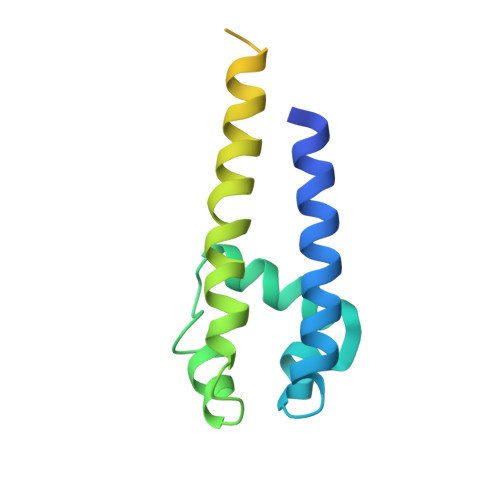Prokaryotic NavMs channel as a structural and functional model for eukaryotic sodium channel antagonism.
Bagneris, C., DeCaen, P.G., Naylor, C.E., Pryde, D.C., Nobeli, I., Clapham, D.E., Wallace, B.A.(2014) Proc Natl Acad Sci U S A 111: 8428-8433
- PubMed: 24850863
- DOI: https://doi.org/10.1073/pnas.1406855111
- Primary Citation of Related Structures:
4CBC, 4OXS, 4P2Z, 4P30, 4P9O, 4P9P, 4PA3, 4PA4, 4PA6, 4PA7, 4PA9 - PubMed Abstract:
Voltage-gated sodium channels are important targets for the development of pharmaceutical drugs, because mutations in different human sodium channel isoforms have causal relationships with a range of neurological and cardiovascular diseases. In this study, functional electrophysiological studies show that the prokaryotic sodium channel from Magnetococcus marinus (NavMs) binds and is inhibited by eukaryotic sodium channel blockers in a manner similar to the human Nav1.1 channel, despite millions of years of divergent evolution between the two types of channels. Crystal complexes of the NavMs pore with several brominated blocker compounds depict a common antagonist binding site in the cavity, adjacent to lipid-facing fenestrations proposed to be the portals for drug entry. In silico docking studies indicate the full extent of the blocker binding site, and electrophysiology studies of NavMs channels with mutations at adjacent residues validate the location. These results suggest that the NavMs channel can be a valuable tool for screening and rational design of human drugs.
Organizational Affiliation:
Institute of Structural and Molecular Biology, School of Biological Sciences, Birkbeck College, University of London, London WC1E 7HX, United Kingdom;
















